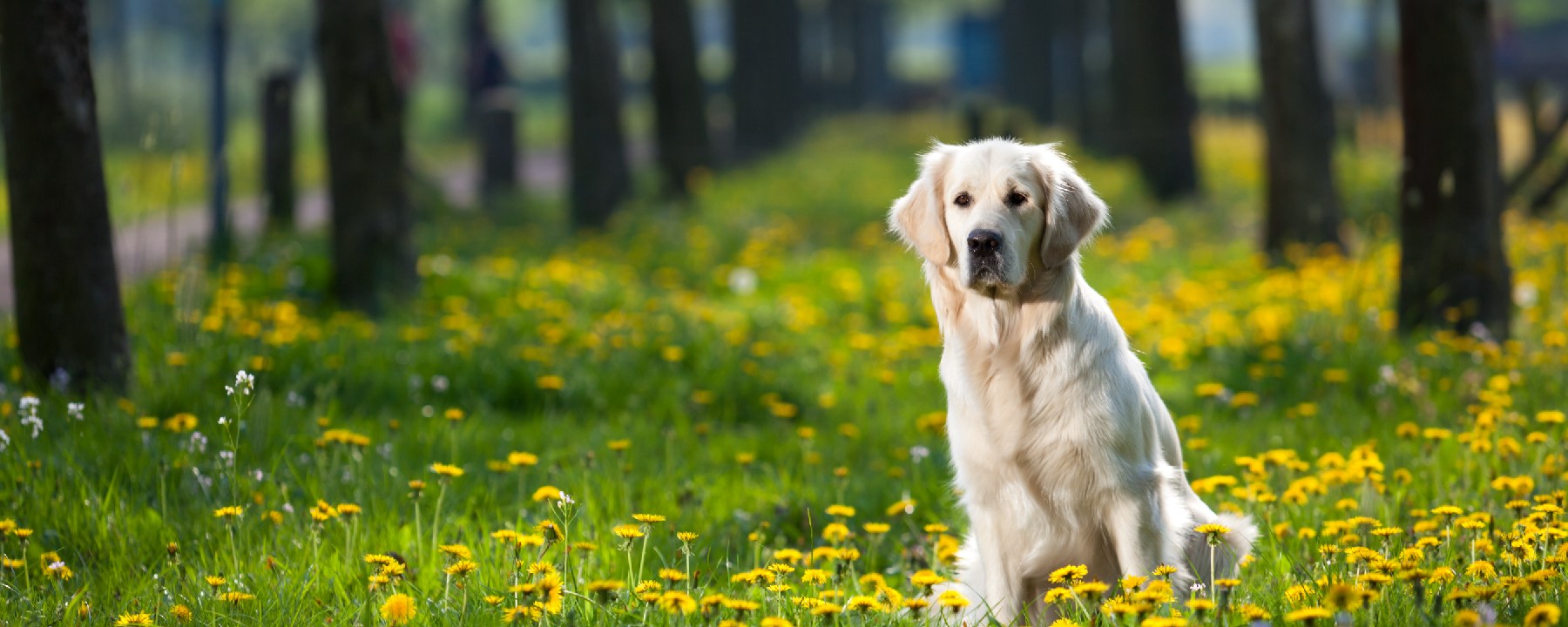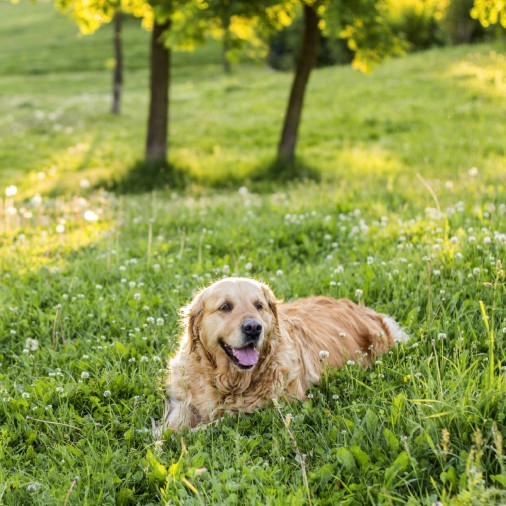
Golden Retriever
Posted: 02/14/2023 | BY: Content Writer
Golden Retriever Dog Breed Profile
Pet profile
Great for those looking for a loyal and reliable family companion.
- Large (53cm to 61cm)
- Typically weighing between 25kg and 34kg
- 10 to 12 years life expectancy
Golden Retrievers make wonderfully loyal and reliable companions for the family. Due to their affectionate nature, they tend to get along with all family members, including children, cats, and other dogs.
Golden retrievers are notoriously easy to train; however, they don’t make the best guard dogs as they are keen to seek approval from everyone that they meet.
Their long golden coats and sweet and joyous temperament have made them one of the most popular dog breeds.

History of The Golden Retriever
The Golden Retriever dog breed was originated by the first Lord of Tweedmouth, Dudley Marjoribanks.
From 1840 to 1890, he bred a yellow retriever with an extinct breed, the Tweed Water Spaniel. He added Irish Setters and Bloodhounds to the mix and eventually created a consistent line of working retrievers.
In 1908, the Golden Retriever was first recognized as a dog breed. It was loved for its agility, beauty, and sweet temperament.
Characteristics of Golden Retrievers
Golden Retrievers are adored for their kind and gentle temperament, making them popular as family dogs and one of the most popular dog breeds. They are easy to train, outgoing, and eager to please.
Golden Retrievers are easily recognizable for their long golden coats, which can sometimes be red or white, and long feather tail.
Golden Retrievers have long coats also need regular grooming, as they can become knotted very easily, and they do tend to shed a lot of hair, especially in warm weather.
Originally bred to be hunting dogs built to retrieve waterfowl, they now are known for loving to fetch and swim.
Adopting A Golden Retriever From A Breeder Or Rescue
Golden retrievers are a sought-after dog breed. It is best to adopt a Golden Retriever puppy from responsible breeders recognized by the American Kennel Club, Golden Retriever Club, or Golden Retriever Foundation.
There are also Golden retriever rescues, and they can sometimes be found in shelters. Golden retrievers can also commonly be adopted through a breeder program that trains them to be service dogs.
Exercise And Nutrition of Golden Retrievers
When a Golden Retriever reaches adulthood, they will require two or more hours of exercise a day. They have bundles of energy, so being cooped up inside all day wouldn’t be healthy for a Golden Retriever.
To stay fit and healthy, your Golden Retriever should be fed high-quality produce over two meals a day. If you are unsure or have any questions about how much to feed your pet and how often, please consult your veterinarian.
Common Health Problems And Illnesses Of Golden Retriever
Golden Retrievers do have their share of health issues, which is why it’s a good idea to take out dog insurance for your Golden Retriever while they’re still a puppy.
Dysplasia occurs due to malformed joints in the hip or elbow and is a common health problem in Golden Retrievers.
This condition may cause your dog to limp or become reluctant to run, climb stairs or play. They can also experience difficulties in rising from a resting position, and the condition can even cause their personality to change.
Treatment can be straightforward and most pets respond well to similar therapies which are used by humans use to treat arthritis. However, the symptoms of dysplasia can often resemble those of Lyme disease, so always pay a visit to your veterinarian to obtain a proper diagnosis.
Cataracts in Golden Retrievers are similar to those in humans. They usually affect older animals, although juvenile cataracts do sometimes occur.
Cataracts will cloud your pet’s eyes and dramatically inhibit their sight. Treatment options are available, and will often include surgery or implants.
Aural hematoma can also affect Golden Retrievers. This condition occurs when ear infections or fleas cause blood to build up and collect in the cartilage of the dog’s ear flaps.
Your veterinarian will normally treat the condition by draining fluid from the affected ears.
Bloat, otherwise known as gastric dilatation volvulus (GDV), is a very serious, life-threatening condition which can cause the dog’s stomach to twist. The oxygen and blood supply to the organ is then cut off and urgent medical treatment is required.
Other illnesses that can affect this breed are benign growths such as lipomas, or fatty tumors that grow under the skin. These are mostly harmless and appear in older dogs, but they could need removing if they are limiting movement.
Whilst grooming your dog, be sure to look out for unusual lumps and bumps and always consult your veterinarian if you have any concerns.
Hypothyroidism occurs when the body doesn’t produce enough of the hormone, thyroxine. Common in larger breeds, the disease affects the way food is processed by the body to produce energy. Symptoms of hypothyroidism include lethargy, mood swings and hair loss.
Hormone replacements are often used to help manage hypothyroidism, however your veterinarian will be able to prescribe the best course of treatment for your pet.
Fun Facts About German Golden Retriever
- Golden Retrievers are known to become depressed if they’re left alone for prolonged periods of time, so it’s important to keep your dog company!
- Golden Retrievers love to swim! Which means they’re always ready for a game of fetch in the lake.
- They were originally bred for retrieving birds that had been shot down or killed by hunters, hence the name ‘retriever’.
- Golden Retrievers are the American Kennel Club’s third most popular breed.
- This breed is popular among celebrities: Oprah, Adam Levine, Jimmy Fallon, Emma Stone, and Miranda Lambert have all owned Golden Retrievers.
